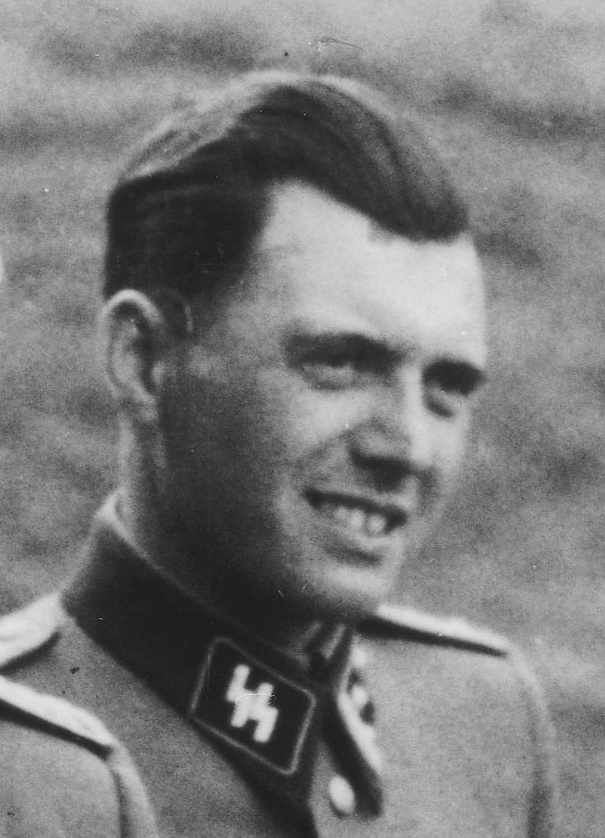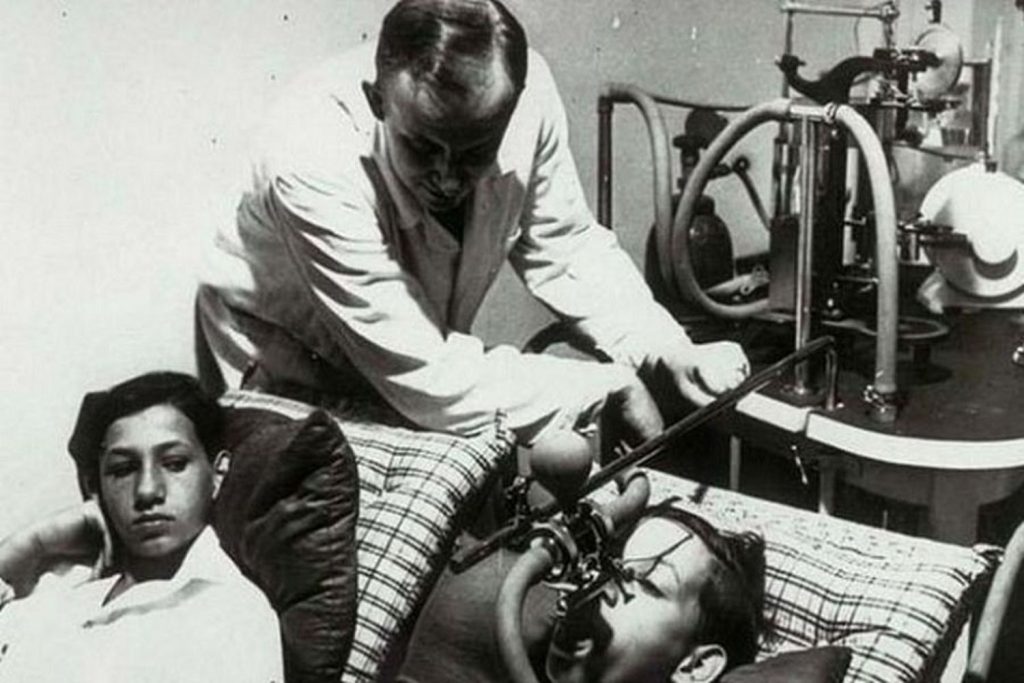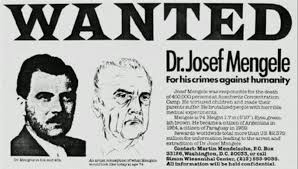The darkest aspects of the second world war brought some of the most sadistic and psychotic beings into the history of the 20th century. From mass murdering camp commandants like Amon Goeth to torturous secret police chiefs like Klaus Barbie both of whom were brought to justice. However, a number of these men managed to escape prosecution and never be brought to account for their heinous crimes. One of these men was Josef Mengele, also known as ”the angel of death.”
Born in the German city of Günzburg in 1911, Josef Mengele was the song of a farming machinery magnate. After a positive run through school, in 1930, he went to Munich to study philosophy, Munich at the time was the headquarters of the Nazi party, and it was there that he discovered right-wing politics. A year later, he would go on to join a paramilitary group known as Der Stahlhelm, which would go on to be incorporated into the Nazi SA organization.
After graduation and with the Nazi Party now in power, Mengele joined the Institute for Hereditary Biology and Racial Hygiene in Frankfurt, where he worked as an assistant for Dr. Otmar von Verschuer, a German geneticist with a particular interest in the research of twins. During this role, Mengele focused on the genetic factors that result in a cleft lip and palate, His thesis on the subject earned him a cum laude doctorate in medicine from the University of Frankfurt although both of his degrees were revoked in the 1960s. Mengele’s medical abilities were highly thought of and were in keeping with the scientific mainstream of the time, and would have been viewed as valid scientific efforts even outside Nazi Germany.
In 1937, Josef Mengele joined the Nazi Party and the SS and a year later. As WW2 broke out, he was assigned to medical service in the Waffen-SS and saw action on the Eastern Front leading to him being decorated with the Iron Cross 1st and 2nd class. After he was wounded in action, Mengele was then moved to the SS Race and Settlement Main Office in Berlin, and began working alongside Verschuer once again, who was now director of the Kaiser Wilhelm Institute of Anthropology, Human Heredity, and Eugenics.
Von Verschuer encouraged Mengele to apply to work in the concentration camp service of the SS, and in early 1943, he was accepted and given a chief physician position at Auschwitz. Mengele was based in the Romani Gypsy sector of the camp. The SS doctors did not administer treatment to the Auschwitz inmates, but supervised the activities of inmate doctors who had been forced to work in the camp medical service. Mengele would visit the hospital barracks every week and order any prisoners who had not recovered after two weeks in bed to be sent to the gas chambers. He would also volunteer to carry out selections of new inmates, and he did this to suitable subjects for his experiments, especially sets of twins, people with eyes of two different colors, dwarfs, and those with physical abnormalities. It is said Mengele enjoyed the selection, a process which few SS officers did, and would often smile and whistle a song whilst doing it.
For Mengele, Auschwitz was an ideal opportunity to carry out anthropology studies using live human subjects. Whilst his research subjects were better fed and housed than the other prisoners, and temporarily spared from execution in the gas chambers, this was only to prepare them well for the horrific treatment that lay ahead. His experiments showed zero remorse to their victim’s physical and psychological health.
Twins were often subject to unnecessary amputations, purposely injected with typhus and even stitched together. In one night, Mengele personally killed fourteen twins in one night by injecting them in the heart with chloroform. If one twin died from disease, he would kill the other twin to allow comparative post-mortem reports to be produced for research purposes. Some witnesses describe how Mengele once sewed two young Romani twins together, back to back, in a crude attempt to create conjoined twins. Both children died of gangrene after several days of suffering.
Mengele was also infamous for attempting to change the colours of prisoners’ eyes by injecting chemicals into them. Those who were selected for having different coloured eyes, known as heterochromatic, were killed instantly so their eyes could be removed and sent to Berlin for studying.
As the Soviets closed in on Auschwitz in 1945, Mengele gathered his medical records and fled to Czechoslovakia under disguise. The documents were handed over for safekeeping to a nurse he was having an affair with. Mengele then fled the Soviets and was captured by the Americans. Incredibly, he was not identified as a war criminal due to Allied disorganization in handing out wanted lists. Mengele also didn’t have the generic SS blood type tattoo and was wearing a Wehrmacht uniform, which led to him being released in July 1945, where he obtained false papers.
Mengele snuck back into Soviet-occupied Czechoslovakia to retrieve his medical documents from his mistress before escaping to Argentina alone in 1949. In Buenos Aires, he was taken in by Nazi sympathizers and other fugitives, and it’s believed he practised medicine and performed abortions without a license. During the 1950s, Mengele was issued an Argentine foreign residence and a West German passport under his real name. He returned to Europe for a ski holiday in Switzerland with his son and widowed sister in law Martha, who he later married and brought to Argentina.
In 1958, Mengele was suspected of practicing medicine without a license when a teenage girl died after an abortion. Aware that any publicity would lead to his Nazi background and wartime activities being discovered, Mengele fled to Paraguay under the name “José Mengele”.
In 1960, after the successful capture, trial and execution of Adolf Eichmann, Mossad turned their attention to capturing Mengele to bring him to trial in Israel. West Germany, despite issuing him legal documents a few years before, now issued a reward for his capture. As the situation began to escalate, Menegele fled once again into rural Brazil. However, the budget constraints of the search and the priority of focusing on Israel’s rapidly collapsing relationship with Egypt led Mossad to call off the search for Mengele in 1962.
In the late 1970s, Rolf Mengele, who had not seen his father since the Swiss vacation in 1956, travelled to Brazil to see Josef. He claimed that he found an unrepentant Nazi in poor health who claimed he had never personally harmed anyone and only carried out his duties as an officer. On 7th February 1979, with his health deteriorating, Josef Mengele visited friends in the coastal town of Bertioga. It was there whilst swimming that he suffered a stroke and drowned. His body was buried under the alias “Wolfgang Gerhard.”
Despite his death, sightings of Mengele were reported around the world up until 1985, and the bounty for his capture was over $250,000 in today’s money. The net soon closed around Mengele’s inner circle, and the location of his grave was revealed. The remains were exhumed to confirm that the body was indeed that of Mengele. A few days afterwards, Rolf Mengele issued a statement to confirm that the body was his father’s, and he added that the news of his father’s death had been concealed in order to protect the people who had sheltered him for decades.
DNA tests confirmed that the body was that of Josef Mengele beyond any doubt in 1992. Despite repeated requests to extradite his body back to Germany, the Mengele family refused. Today, his skeleton is stored at the São Paulo Institute for Forensic Medicine, where it is used as an educational aid during forensic medicine courses.




